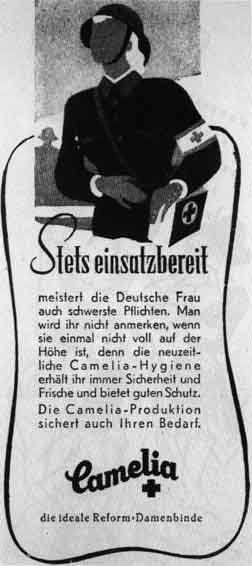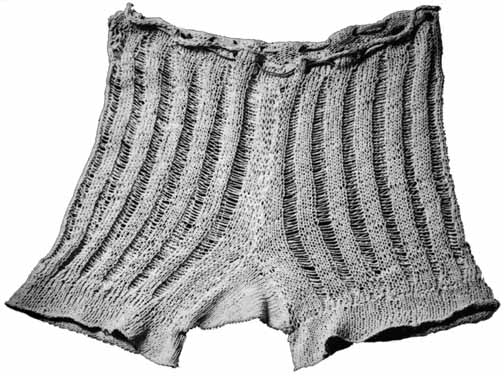More Camelia ads:
1920s (Germany), 1930s (Germany), 1952 (Australia), 1970s (France), 1990 (Germany) - Underpants directory
What did European and American women use for menstruation in the 19th century and before?
See the B-ettes tampon. See the tampon directory.
Ads for teens (see also introductory page for teenage advertising): Are you in the know? (Kotex napkins and Quest napkin powder, 1948, U.S.A.), Are you in the know? (Kotex napkins, 1953, U.S.A.), Are you in the know? (Kotex napkins and belts, 1964, U.S.A.), Freedom (1990, Germany), Kotex (1992, U.S.A.), Pursettes (1974, U.S.A.), Pursettes (1974, U.S.A.), Saba (1975, Denmark)
More ads for teens: See a Modess True or False? ad in The American Girl magazine, January 1947, and actress Carol Lynley in "How Shall I Tell My Daughter" booklet ad (1955) - Modess . . . . because ads (many dates).
CONTRIBUTE to Humor,
Words and expressions about
menstruation and Would
you stop menstruating if you could?
Some MUM site links: homepage
| MUM address & What does
MUM
mean? | e-mail
the museum | privacy on
this site | who runs this
museum?? |
Amazing women! | the art of menstruation | artists (non-menstrual) | asbestos | belts | bidets
| founder bio | Bly, Nellie | MUM board | books:
menstruation and menopause (and reviews) | cats
| company
booklets for girls (mostly) directory | contraception and religion | costumes | menstrual cups | cup
usage | dispensers | douches, pain, sprays | essay directory | extraction | facts-of-life booklets for
girls | famous women in
menstrual hygiene ads | FAQ
| founder/director biography | gynecological topics by Dr.
Soucasaux | humor | huts | links
| masturbation | media coverage of MUM | menarche booklets for girls
and parents | miscellaneous
| museum future | Norwegian menstruation exhibit |
odor | olor
| pad directory | patent medicine | poetry directory | products, current | puberty booklets for girls and
parents | religion | Religión y menstruación | your
remedies for menstrual
discomfort | menstrual products safety
| science | Seguridad de productos para la
menstruación | shame | slapping, menstrual | sponges | synchrony | tampon directory | early tampons | teen ads directory | tour of the former museum (video) | underpants & panties directory
| videos, films directory |
Words and expressions about menstruation | Would you stop menstruating if you could? | What did women
do about menstruation in the
past? | washable pads
Leer la versión en español de los siguientes temas: Anticoncepción y religión, Breve reseña - Olor - Religión y menstruación - Seguridad de productos para la menstruación.


The influence of the World War II on German
products:
|
|
|
Above:
Ad from the magazine Mode und Wäsche,
1940/41, for Camelia menstrual pads.
|
|
|
Above: White underpants hand knitted from the fiber of American sugar sacks, 1945/46 (in the City Museum of Munich, photo from Zur Geschichte der Unterwäsche. 1700-1960), showing the make-do attitude of post-war Germany, and the talent of a German woman. |
More Camelia ads:
|


